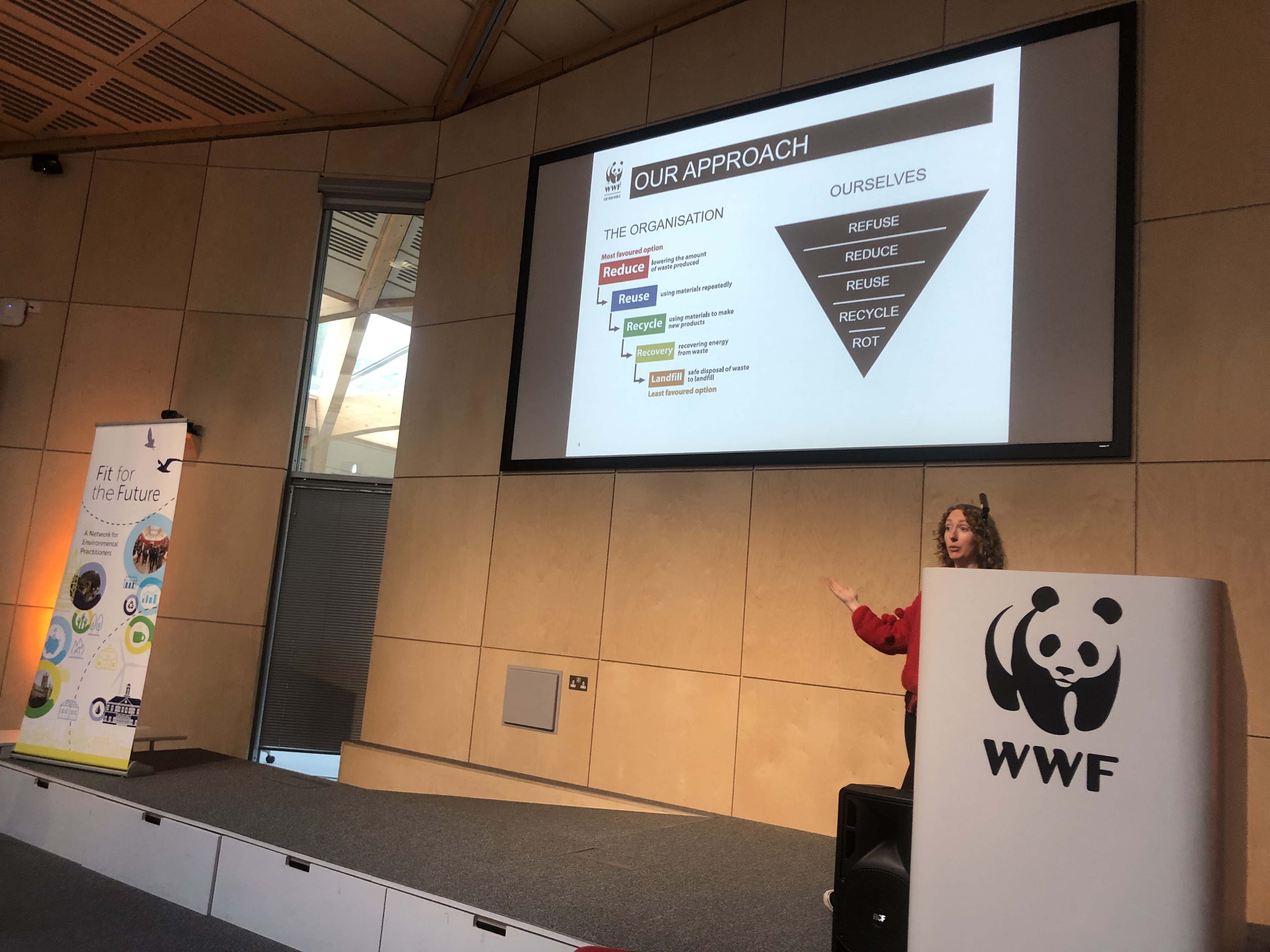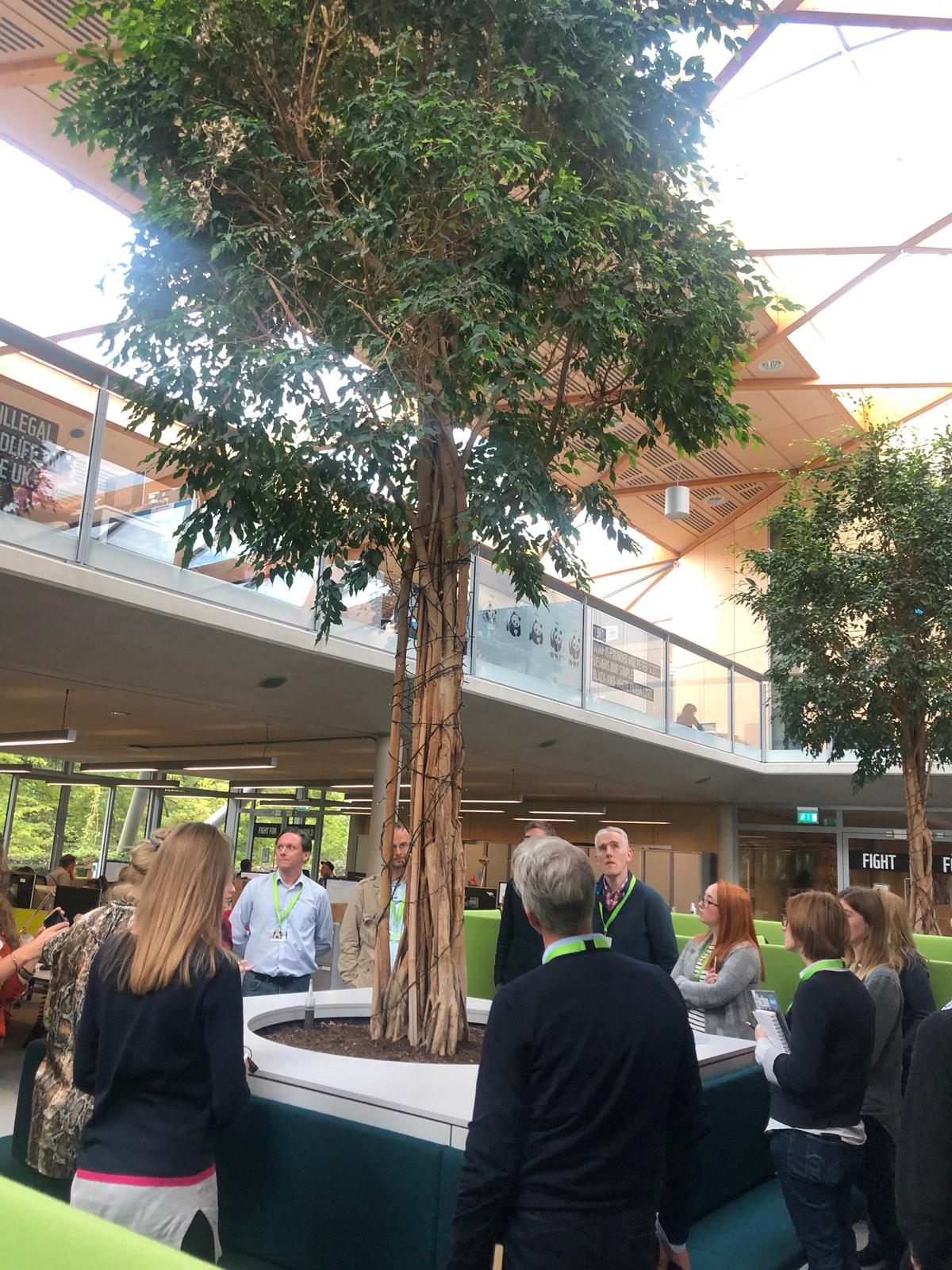Possibly the only office in the world where you can get a hug from a giant tiger teddy on the way in...

Our members hear from Lauren Wiseman, WWF's Environmental Manager, on the charity's internal approach to waste management.
WWF have committed to remove all avoidable single-use plastic in their products, operations and supply chain by 2020. They are working internally with staff, and externally with suppliers, to raise awareness of what single-use plastics are and their impact on the environment. Alternative products are being investigated in order that these plastics can be entirely removed from operations.
The food waste from the building is sent to an anaerobic digester, which produces biogas to generate electricity. The residual waste from this process can be used as fertiliser.
WWF's current recycling rate is over 75% and anything that can’t be recycled or composted is sent for incineration/energy generation. 0% of the waste from the office is sent to landfill.

30 seconds to sort the recyclable plastic...and GO!

Impact on plastics is all about scale - start small, start with personal choices. Then engage your colleagues, talk to your tenants, and see the change. Martin Gettings, Group Head of Sustainability at Canary Wharf Group plc. presents to our network members.

The Living Planet Centre shows that, through the smart use of design, materials and technology, it’s possible to create a state-of-the-art building with minimal environmental impact. It's BREEAM Outstanding status confirms its place as one of the greenest buildings in the UK. In the above image, members take a look at the visitor area of the building.

Bringing the outside in: space, light and natural wood give the inside of the building an outdoor feel. Three extra-large ‘weeping figs’ stretch all the way from their large ground-floor containers up to well above the height of the mezzanine.

Our members take a look at the outside of the building. There are wind cowls for the efficient 'passive' ventilation system, an array of solar PV panels covering more than 500 square metres of the roof area, natural lighting thanks to a lot of glass, with additional 'sun break' to prevent over-heating and glare. Biodiversity is also encouraged on the site with a swale, bird and bat boxes, and native trees and shrubs.
Fit for the Future has several groups that meet throughout the year to discuss specific topics such as waste, energy management and climate change adaptation. To find out more about these groups and to get involved, contact us. If you're already a member, you can find out more about our events, including the 2019 Network Harvest, and sign up here.